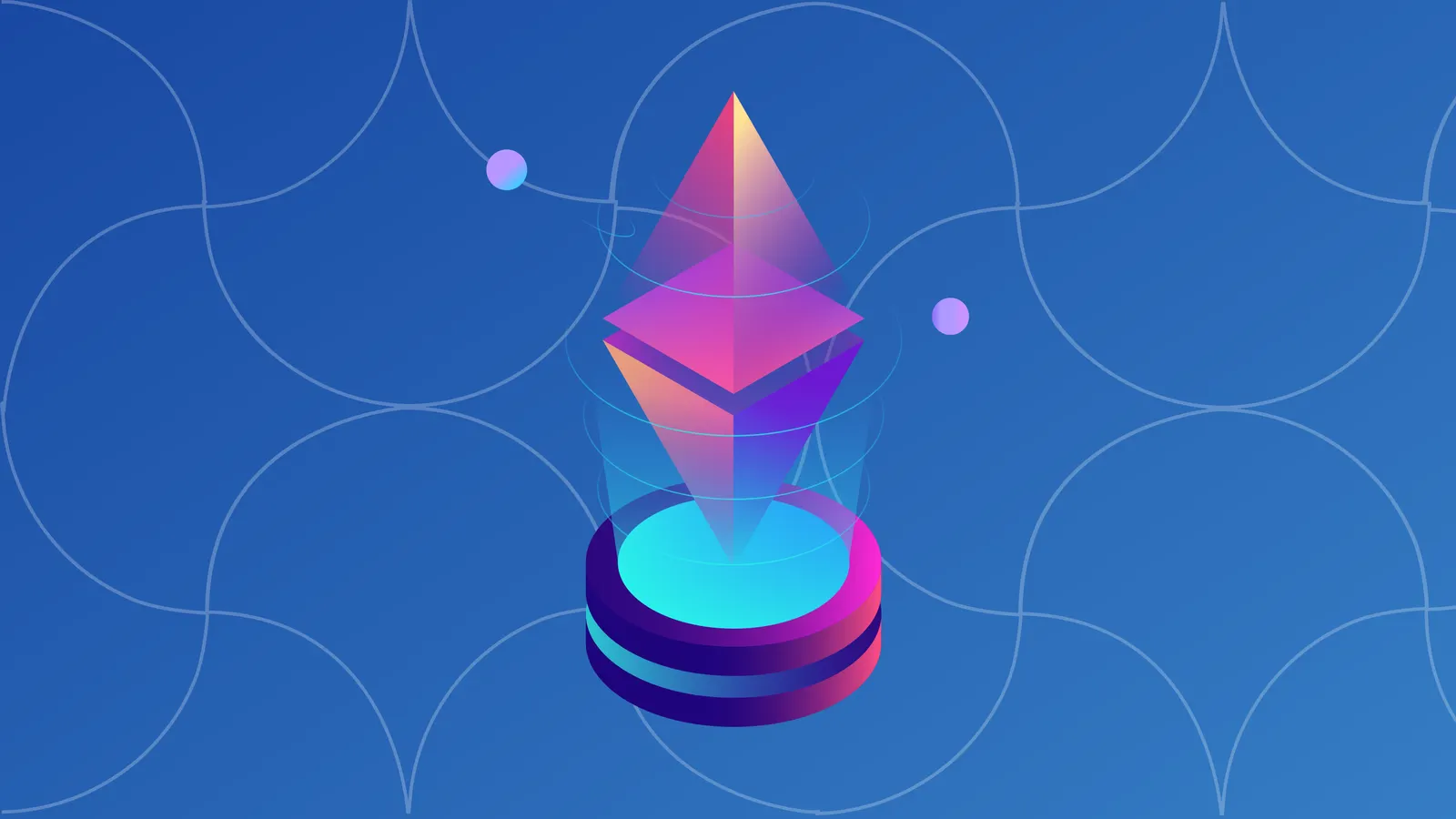In September 2022, Ethereum made the transition from a power-hungry, proof-of-work system to an environmentally friendly proof-of-stake system. This switch is known as the "merge.” Here’s what you need to know.
What is the merge?
The merge changes the way that Ethereum transactions are validated. Previously, Ethereum worked like Bitcoin: transactions were mined by a decentralized network of computers, which raced to solve mathematical puzzles and were rewarded with new coins for doing so.
This "proof-of-work" consensus mechanism, which requires computers to agree on which transactions will be added to a new block, is very energy-intensive.
With the merge, Ethereum has transitioned to a consensus mechanism called proof-of-stake, which uses far less power and should make the network about 99% more energy-efficient, according to figures from the Ethereum Foundation.
Under proof of stake, transactions are confirmed by addresses that have staked—pledged to a smart contract—lots of ETH. Those who have staked more ETH earn proportionately higher rewards. While proof of stake conceptually makes the rich richer, it doesn’t boil the oceans, either.
The Ethereum community has been working on the transition to proof of stake ever since the blockchain launched in 2015.
The merge is one of a set of upgrades that should also make Ethereum faster and cheaper to use. Right now, Ethereum is beleaguered by slow transaction times and high costs. At peak congestion times, a simple swap on Uniswap for tokens worth $1 could cost you over $50 in transaction fees.
The merge itself won’t resolve high gas prices, however—it just sets the stage for a set of upgrades that will eventually cut costs. These upgrades used to be known as Ethereum 2.0, but that terminology was scrapped in early 2022.
What happened in the merge?
In December 2020, Ethereum launched the "beacon chain," a proof-of-stake chain that ran in parallel with the main Ethereum blockchain. The beacon chain was neutered; while users could stake ETH on it, the main functions of Ethereum weren't enabled.
The merge switched the mainnet version of Ethereum—the part that supports transactions and smart contracts—to be part of the beacon chain. Following the merge, the proof-of-work part of Ethereum will fall away, and mining will be gone forever.
After the merge, you’ll eventually be able to run smart contracts on mainnet Ethereum using proof of stake rather than proof of work. You’ll also be able to withdraw any ETH you’ve staked on Ethereum 2.0. You won’t be able to do this right after the merge, however. You’ll have to wait for yet another post-merge upgrade, which the Ethereum Foundation—the organization that oversees the development of the Ethereum blockchain—expects will happen “very soon” after the merge.
Specifically, withdrawals will open up once the Shanghai upgrade is executed. Ethereum developer Marius van der Wijden is confident that Shanghai will be implemented in 2023.
When did the merge happen?
The merge took place on September 15, 2022, at 2:45 am EST. The event was triggered by Ethereum's mainnet hitting "terminal total difficulty," a predetermined point at which ETH mining became effectively impossible, with the network automatically switching over to the proof-of-stake consensus mechanism.
And we finalized!
Happy merge all. This is a big moment for the Ethereum ecosystem. Everyone who helped make the merge happen should feel very proud today.
— vitalik.eth (@VitalikButerin) September 15, 2022
The merge itself took around 12 minutes to come into effect, with the success of the event signaled by the network successfully proposing and approving new blocks of transactions under the proof-of-stake consensus mechanism. The Ethereum network missed just one block during the transition and, after 12 minutes and 48 seconds, successfully reached finality.
During the merge, crypto exchanges paused trading for ETH and Ethereum-related tokens as a precautionary measure.
Do you need to do anything?
Probably not. The merge won’t change anything about the history of Ethereum. You’ll still be able to head to block explorers like Etherscan to get a complete record of the Ethereum blockchain.
Of course, if you’re an Ethereum miner, you’ll be out of a job after the merge—you’ll have to mine somewhere else. Large-scale mining companies have been forced to rethink their business models, while many miners are expected to pivot to other proof-of-work blockchains. Some of these, such as Ethereum Classic and ETHPoW, are hard forks of the Ethereum blockchain.
One other thing: following the merge, the issuance of new Ethereum will reduce by about 90%. Ethereum’s issuance could even become deflationary if a lot of people use it.
What comes after the merge?
After the merge, subsequent upgrades will increase the capacity and speed of the network by introducing “shard chains.” These will expand the network to 64 blockchains. The merge needs to happen first because these shard chains rely on staking.
The Ethereum Foundation noted that the need for scaling through shard chains has been offset somewhat by layer-2 scaling solutions, like Optimism and Arbitrum.
Layer-2 scaling solutions temporarily transition ETH and ERC-20 tokens to another blockchain, which completes computational busywork for a fraction of the cost and at a far lower price.
Eventually, shards will likely coexist with layer-2 technologies. The Ethereum Foundation says that the need for “multiple rounds of shard chains” will be metered by the Ethereum community, but that it could provide “endless scalability.”
Editor's note: This article was first published on April 13, 2022, and last updated on September 15.







